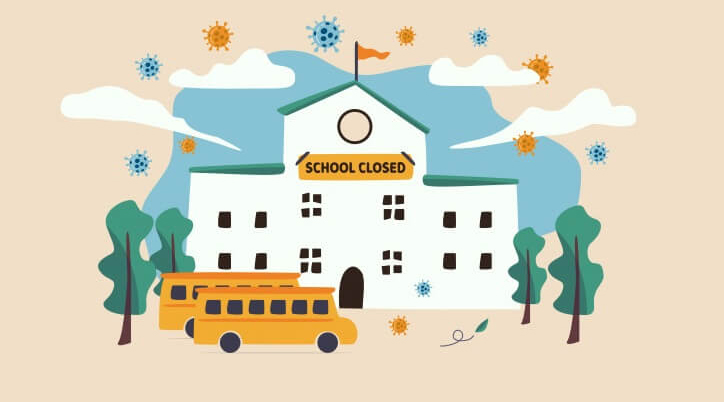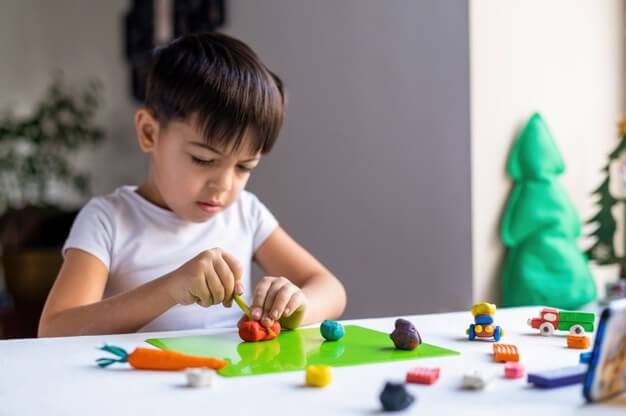One Year into COVID-19 Education Disruption: The Status Today
- School@Home
- 06 Jun, 2021
- 4 Mins Read

The deadly coronavirus has impacted the entire world enormously, and its effect on the education section is no different. The virus started spreading in December 2019 and is still prominent. To put a break of its spread, the governments of all the countries announced lockdowns and implemented best practices.
Along with all the public places like theatres, malls, hotels, and restaurants, the schools and colleges were also shut down completely. While people could afford the closure of malls, restaurants, and other places, schools’ closure has made millions of students pay a heavy price. School at home, distance learning, online education, and preschool learning for kids have become the new norm today.
The closure of schools started in the second week of March 2020 in most of the countries, and it's been a year now. According to UNESCO’s latest data, the schools in 200+ countries and territories were closed, affecting 168+ million students.
Let’s break down some crucial stats from the UNESCO report:
To bring up the momentum and enable education again, the ministries and educational organizations introduced new models and practices. For instance, there is a rise in eLearning startups, preschool online learning platforms, live classes on YouTube, as well as online classes through Zoom/Google Meet, etc.
While remote learning and online education can’t compete or replace classroom learning, but this has worked effectively for students.
School exams cancelled, postponed, modified.
Along with changes in the learning experience, the impact was also on the exams. Some countries chose to cancel the exam, some postponed them, whereas other countries introduced new ways to examine students.
Last year, Norway had to cancel all the written exams for 10th standard and high school. The education ministry of Norway stated that the exams hold only 20% of the importance. 80% of the significance is counted on course participation and learning.
In many states in India, the students from standard 1st to 8th were promoted to the next standard without any exams. Along with India, many other countries follow the same pattern.
Some countries chose to postpone the exams to next year so that they can conduct things when the situation gets normal. For example, CXC (Caribbean Examination Council) delayed the high school exams by four months. The Diploma of Secondary Education (DSE) exams in Hong Kong were postponed by a month.
Ireland postponed the final exams of schools by a few months. Besides, this country also put a hold on the start of the next academic session. Indian government created revised exam patterns and schedules by making adjustments to its academic calendar.
As per educational institutes and researches, it has been found that the students couldn’t gain much academic knowledge during this phase. The primary school students who were learning at home to read couldn’t practice it effectively. When it comes to Mathematics, up to 50% of general annual learning could be gained during the period.
Although this impact was not global, the learning was impacted for a majority of the school students.

As per a study, the antibodies of SARS-CoV-2 were found in the blood of a few children who had joined preschool and day care centres from March to May 2020. The kids are at a higher risk of getting infected by coronavirus because of the exposure of their working parents to the virus.
Although the number of kids who got infected by the virus was less than the number of adults, nearly 33% of the kids who got infected were admitted to the ICU. This is riskier for children because their immune systems are not as strong as adults.
The closure of preschools has affected both the children and parents. Moreover, the governments are deciding on reopening preschools after primary and secondary schools. Preschools and kindergarten help foster early learning development in kids by supporting their behavioural, physical, emotional, and social aspects.
And even if the preschools and kindergarten reopen soon, most of the parents will choose not to send their children there for some time until the deadly coronavirus is completely gone. In such a scenario, online preschool learning at home option is emerging.
The preschool learning for kids at home programs offers several different activities, videos, worksheets, etc., which help kids develop various speaking, listening, reading, and writing skills.
For instance, the children can join the best online homeschool programs to learn from home to identify, read, speak and write alphabets and numbers. They can learn some stories, poems, and solve puzzles for alphabets and counting. With the right preschool learning programs, parents can assist the kids in holding school essentials like pencils, erasers, and sharpeners, as well as how to use these things.
It’s been more than a year now since the closure of schools started all over the world. Amid all the challenges faced by students, a few solutions were discovered to enable learning for students of all ages, from preschoolers to primary and secondary school students. Online education has become a trend today, which will continue even when the coronavirus is gone. With eLearning and school at home, the students can learn at their own pace and browse lessons based on their level of understanding.